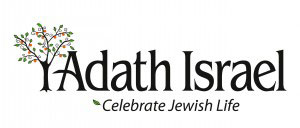Devarim
Triennial: 2:31-3:22 // Ishaiahu 1:1-27 // Shabbat Hazon
==
There is a special name for this Shabbat, which is Shabbat Hazon, the Shabbat of the vision. The vision is the vision of our haftarah, the first vision of the book of Isaiah, of the destruction of Jerusalem, remembered on the 9th of Av, when we fast and commemorate the destruction of the temple both times and a few other calamities that befell our people, such as the First Crusade, the expulsions from England, France, and Spain, the beginning of WWI, the beginning of the deportation of the Warsaw ghetto, and the AMIA bombing in Buenos Aires – all of those happened on or around the 9th of Av.
Tomorrow night we will read the Book of Lamentations, or Megillat Eicha. That reading only happens at night, differently of what we do in Purim, when we read the Megillah of Esther both at night and in the morning.
Now the Book of Lamentations begins with the word Eicha, which is translated as “how”. The book really opens with a rhetorical question: How is it that the city, full of people, sits alone and abandoned? That same word, Eicha, appears in our reading of Devarim, at the beginning of the second alyiah in the full reading. There, Moshe asks “Eicha”, How can I bear alone your bickering, and the burden of you?” That same question, Eicha, will appear in our haftarah: Isaiah asks – Eicha – how has she become unfaithful, the city that once was filled with justice?
It is interesting to notice that our portion of Devarim, always read before the 9th of Av, always accompanied by the words of Isaiah, has only two mitzvot – to appoint judges who actually know the law, and not showing partiality in judgment.
Now, among the causes of why Jerusalem was destroyed the rabbis bring the idea that judgment in Jerusalem was deprived of compassion. In Baba Metzia 30b one of the many causes of destruction is that judgment was done sticking to the letter of the law – and never seeing the full picture. So the centrality of proper judgment, a judgment that must take in consideration the spirit of the law, cannot be overstated. Another of the causes is baseless hatred – the archetype of that idea is the famous story of Kamtza and Bar Kamtza.
Rabbi Alan Lew, z”l, brings forth a great idea. He ties the journey of the High Holidays to the 9th of Av. There are seven weeks between the 9th of Av and Rosh Hashanah. On RH we celebrate the birth of the world and the renewal of all things. Now for renewal to happen, the old must be torn down – and that is symbolized, in our personal journey, by the 9th of Av. So the shaking of the old structures, their crumbling, the letting go of whatever is not useful or good anymore begins happening now. This is the beginning of the journey, that will close in Sukkot when we create new structures – symbolized by the sukkah. On Simchat Torah, in 10 weeks from now, we will read Genesis again, and God is going to ask the First Human an essential question: Ayeka, where are you?
The Hebrew letters of the word Ayeka are the same of Eicha. The tradition is inviting us, beckoning us, to embrace the crumbling of the structures, to mourn those structures and to renew ourselves. The guiding principles of that renewal are letting go of hatred and embracing compassion. It is then, at the end of our journey, that we will be able to find an answer to this question – where are you, Ayeka, that begins today, with the question Eicha, how.
How did we get here? What are the ego traps that brought us here? What are the causes of the crumbling of the old structures, and why don’t they serve their purposes anymore? It is only with the radical embracing of what is that we can move forward and create what can be.
May this Shabbat mark the real beginning of our journey towards renewal, justice and compassion. Shabbat Shalom.
